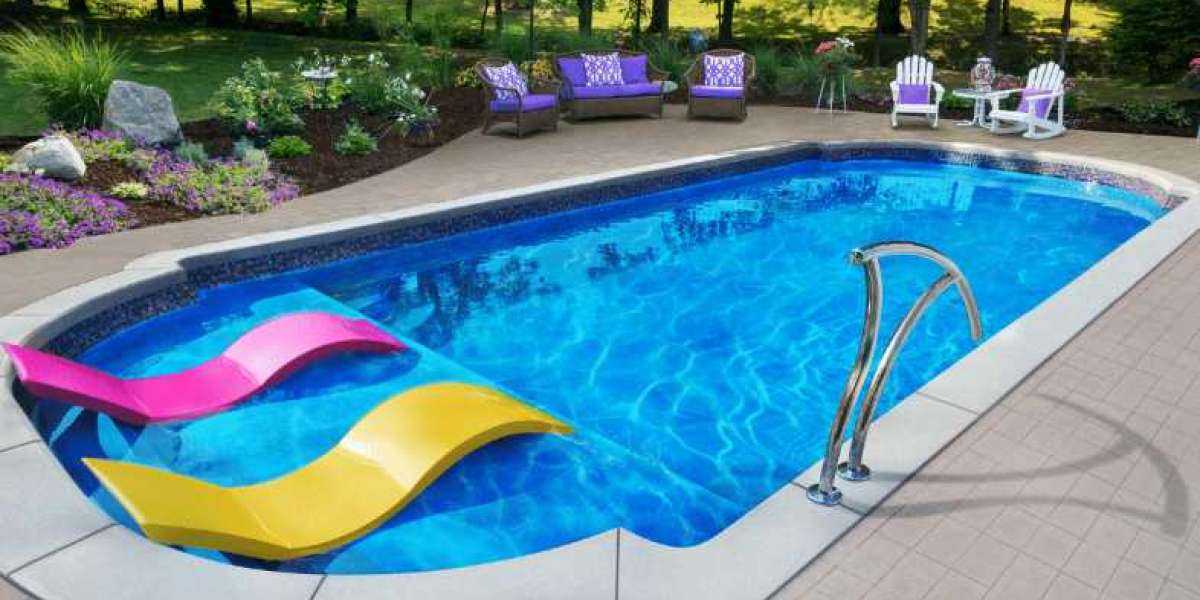Ever wondered how a fiberglass pool goes from an idea to a backyard centerpiece?
Or what actually happens during the installation process while making sure it stays strong and smooth for years?
If you are thinking of adding a fiberglass pool at home while aiming for a stress free experience with results that last then you are in the right place. Here is everything homeowners like you ask before and during the installation phase.
Whether this is your first pool or you have had one before the way inground fiberglass swimming pools are installed can make all the difference.
Why Fiberglass Pools Stay Popular Year After Year
Most homeowners don’t just want a pool that looks good. They want something that holds up over time without needing repair every season. Fiberglass shells are strong while flexible enough to resist cracking with soil movement. They come ready made so they go in faster compared to concrete.
You get smooth surfaces that don’t irritate your skin as well as lower maintenance because algae have a hard time sticking. This alone makes the material a favorite for families who want fun without spending weekends scrubbing tiles.
What to Expect When Planning a Fiberglass Pool
Choose the Right Shape and Size First
Before you start digging you need to think about how you plan to use the pool. Some people like swimming laps while others just want a place to relax with family. Fiberglass pools come in all kinds of shapes and sizes so it is easy to find one that fits your backyard without needing a custom order.
Understand the Soil and Terrain
Not every yard is pool ready. If the soil holds water or has too many rocks or drains too fast the crew might need to dig deeper or add stronger support. Knowing what is underneath the grass helps you avoid delays and makes sure your pool sits firm for years.
Get Local Permits and Approvals
Every town has its own rules. Some places want a soil test while others ask for special drainage plans. Having all your paperwork ready before the work begins helps the build stay on track so nothing stalls halfway.
Preparing the Ground Before the Shell Comes In
The first step is site prep. It sounds simple but skipping the small stuff here leads to big trouble later. Soil needs to be checked for drainage. A pool shell sitting on soft or waterlogged ground may shift over time.
Excavation needs to follow the pool’s shape allowing space around it for plumbing as well as backfill. Builders often lay gravel at the base since it provides a level surface while also helping with drainage.
Once the base is ready and plumbing lines are set the shell can be brought in and lowered carefully into the space.
Water and Backfill Go Together Step by Step
The shell can’t just sit there while the hole is filled. The right way to do this is by adding water inside the shell while placing backfill around it at the same time.
This balances pressure so the shell doesn’t warp. If one side fills faster than the other that pressure difference might push the shell out of place.
Clean crushed stone is often used for backfill since it holds the shape better than sand while letting water drain easily.
Plumbing and Electric Setup Done the Smart Way
A solid plumbing layout saves you from leaks down the line. Pipes need to be supported as well as laid out with enough slack so they don’t crack if the ground shifts slightly.
Then comes wiring. That includes lighting inside the pool and connections to the pool pump or heater. All pool construction must meet local codes so it is safe to use once you are swimming.
Proper placement of skimmers and return jets also affects how clean the pool stays as well as how good the water circulation feels.
Decking and Final Touches That Pull It All Together
After the shell is secure and the systems work right it’s time for the fun stuff. Pavers or stamped concrete are common around fiberglass pools.
While choosing your deck keep in mind how much sun hits the spot throughout the day. Some materials heat up more than others and may be tough on bare feet.
Steps ladders lighting and water features get installed next. At this point it’s all about turning the pool into your favorite place to relax.
How to Avoid Common Mistakes During Installation
Some people rush through installation or hire untrained contractors to save money. That often leads to uneven settling poor drainage or cracked plumbing.
Make sure the installer knows how to set the base as well as manage the fill process. Watch for details like pipe support backfill method and how level the pool shell sits once filled.
Also never skip the inspection. Even the smallest alignment issue can affect how well your pool functions down the line.
Fiberglass Pool Maintenance Begins on Day One
Once the pool is filled and treated the clock starts ticking on your maintenance routine. Regularly test pH and chlorine levels especially during the first few weeks. Avoid sharp tools while cleaning as fiberglass has a protective gel coat. Brushing the pool weekly with soft bristles helps keep it spotless.
FAQs
How long does it take to install a fiberglass pool?
Most pools are fully installed in two to three weeks once permits are ready.
Can a fiberglass pool crack or break over time?
These pools are flexible and strong so they handle ground movement well without cracking easily.
Do fiberglass pools get slippery?
Modern finishes are designed to feel smooth but not too slick so they are safe to walk on.
Are there color choices available?
Yes you can pick from light blue as well as deep navy or sand and other finishes depending on the model.
How long will a fiberglass pool last?
With regular care a fiberglass pool can last over 30 years while keeping its smooth surface.
Thinking of Installing One at Home? What Should You Really Focus On?
Are you ready to enjoy all the benefits of Inground Fiberglass Swimming Pools without running into issues that cost more than expected?
Focus on the ground prep while making sure plumbing and fill steps are done right. Once those are handled you’ll end up with a pool that holds up for years with little upkeep.
If you're looking for experienced professionals who know this process inside out then Coastal Pools Spas has earned trust by delivering quality across projects without cutting corners.



